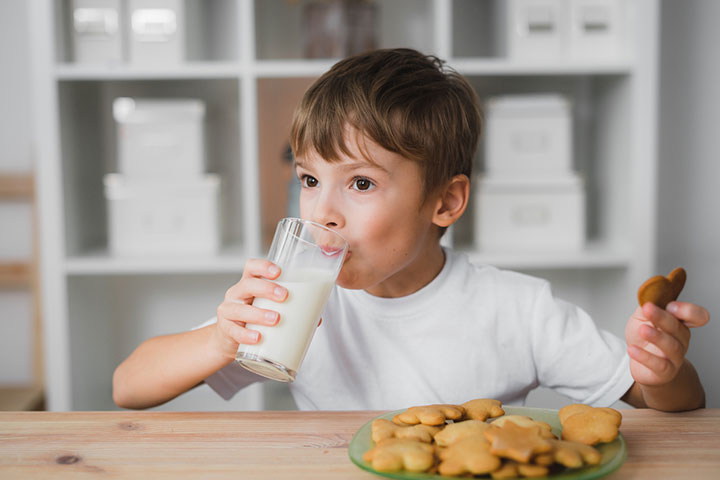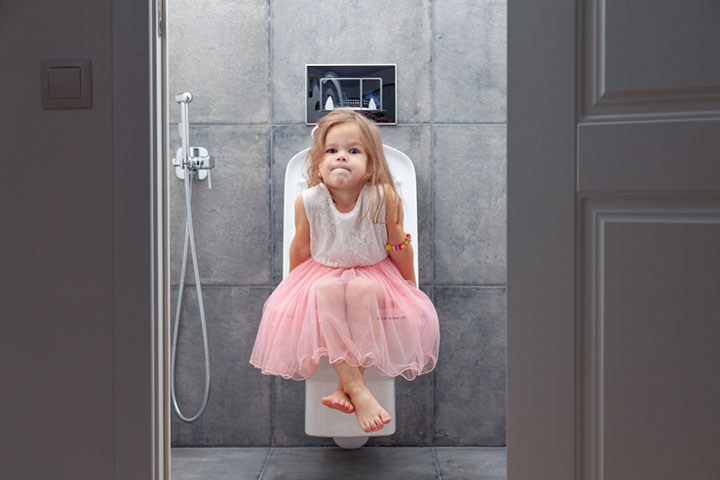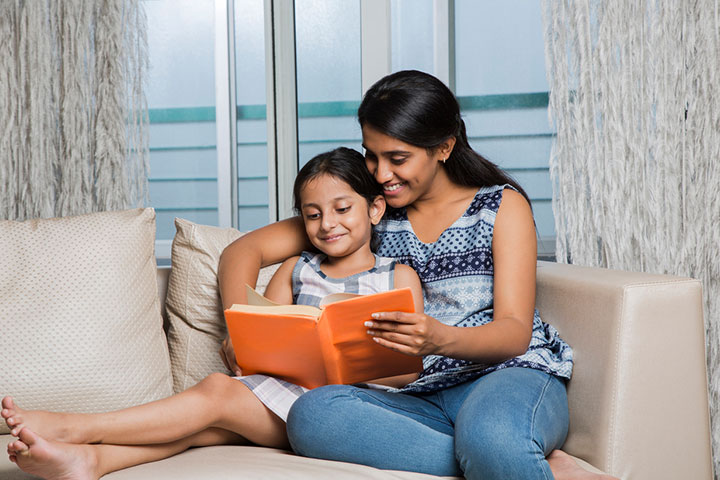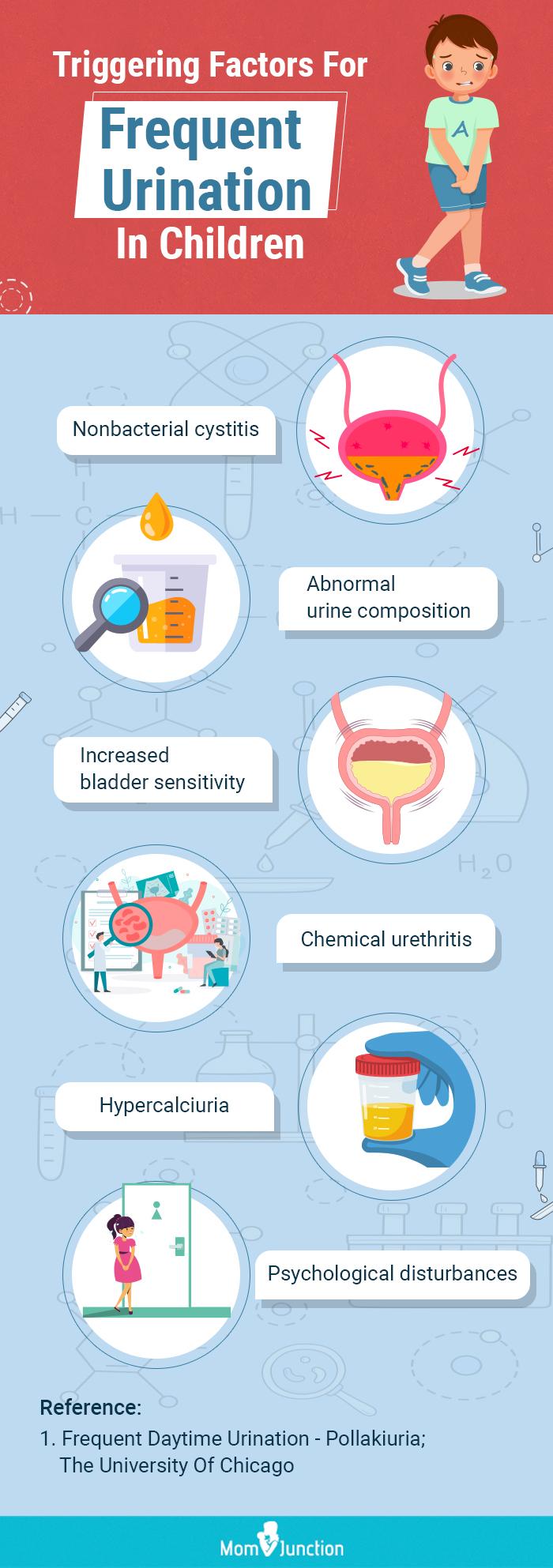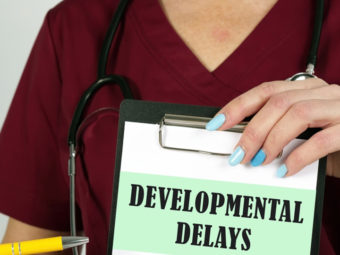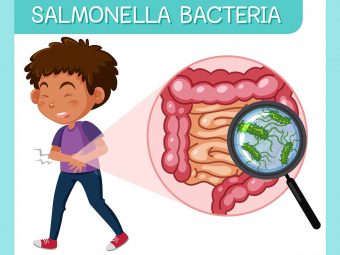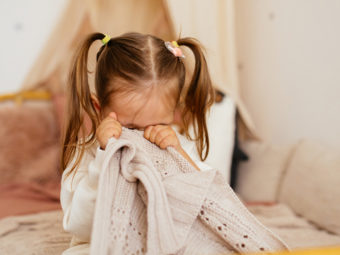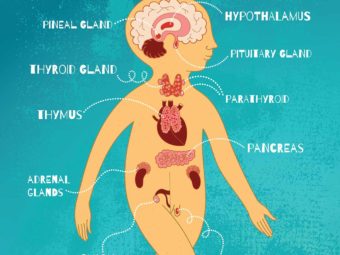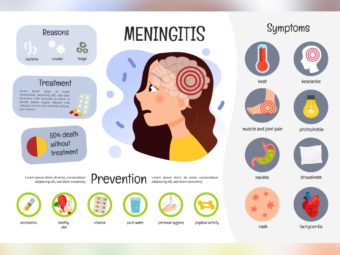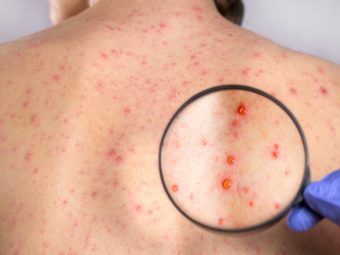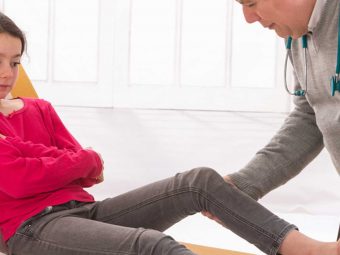
Image: Shutterstock
The feeling of frequent urination in kids is known as pollakiuria. It is a sensory emergency of peeing without the physical need to pass urine. The child might feel to urinate at the earliest but pass only a small amount of urine every time they feel urinary urgency (1). This condition is usually self-limited and benign. They last for about a few weeks or months (2). However, in some children, pollakiuria might last for comparatively long periods. Read on to know more about pollakiuria, its symptoms, causes, treatment, and ways to manage this condition.
How Often Should A Child Urinate During The Day?
There are no hard and fast rules on the number of times a child can urinate in a day. However, it would be safe to say that a visit to the washroom every two hours is normal.
Sometimes, the child may urinate more often if they have taken more fluids, if the weather is cold, or just for fun (younger children).
 Did you know?
Did you know?What Causes Frequent Daytime Urination in Children?
The cause of frequent daytime urination is not exactly known. There is rarely any physical cause associated with this condition (3). Experts believe that it may be related to psychological or psychogeniciX Arising from the mind or mental or emotional tension factors. In certain cases, stress or problems related to school, home, or family may be the triggering factors in children (2).
The triggering or precipitating factors may include the following (2, 3, 4, 5, 6).
- Psychological factors such as school-related stress; the death of a family member or friend; relocation to a new home or school; the birth of a sibling; abuse or bullying; or parents’ divorce
- Dietary factors such as excessive intake of milk or caffeine
Image: IStock
- Constipation
- Inflammation of the bladder (non-bacterial cystitis)
- Inflammation of the urethra (chemical urethritis)
- Overactive bladder or increased sensitivity of the bladder (can also occur during winters or cold days)
- Excessive secretion of calcium in urine (hypercalciuria)
- Tic disorders such as Tourette Syndrome
Often, no obvious triggering factor can be identified in children with this condition.
Symptoms Of Frequent Urination Or Pollakiuria In Children
Image: Shutterstock
The signs and symptoms of pollakiuria may include the following ( 4, 7)
- The child may urinate (void) as frequently as every five to ten minutes. The frequency can be three to four times a hour or up to 30–40 times a day. It may also recur in a few months or years.
- The child may experience no abdominal flank, nocturnal enuresis, or dysuriaiX Pain, discomfort or burning sensation with urination pain while urinating.
- There is no urinary incontinence (leaking of urine) or loss of bladder control in the child.
- A small amount of urine is passed in each void.
- There are no changes in bowel movements.
- The child may urinate at night (nocturia may be present in 25% of the cases), but the frequency will be quite less compared to the daytime.
Nocturia is defined as a condition wherein one needs to wake up at night to urinate.
- There is no sign of polyuria (passing large volumes of urine) or an infection. The color, odor, and stream of the urine are normal.
- There is no excessive increase in the intake of liquids or fluids.
A mom blogger, who goes by the name ‘the alabaster mom,’ shares the symptoms her daughter’s experienced, “My kid got sick during Easter weekend and developed a significant fever. We took her to the doctor on Monday. I was very concerned about a possible kidney infection. She has been peeing very frequently (and when I say frequently, sometimes it’s as little as fifteen minutes from her last trip to the loo). It’s not constant (seems to come and go), but it has been worrisome all the same. We were told that it is probably something called pollakiuria. The doctor gave us a handout on the topic. Honestly, the symptoms fit A ( her daughter) to a tee: extremely frequent urination but without pain or burning, happens mostly in girls in preschool and kindergarten and typically goes away on its own after 6-8 weeks (i).” If you suspect that your child has pollakiuria, it’s important to seek medical guidance.
Diagnosis
Image: IStock
Pollakiuria is a benign condition. Therefore, healthcare practitioners may not opt for invasive examinations if the urinalysis report and physical examination results are normal.
Doctors usually examine the medical history and perform a physical examination (1). In addition, doctors distinguish frequent daytime urination (pollakiuria) from diuresis or polyuria (excessive production or passage of urine) due to metabolic disorders such as diabetes [simple_tooltip text=”diabetes insipidus” tooltip=” A rare disorder that creates a fluid imbalance in the body due to overproduction of urine ” ] and diabetes mellitusiX A condition characterized by high blood sugar levels (2).
Doctors may suggest the following laboratory or clinical evaluations (1, 4).
- Medical history: This evaluation may help identify the history of urinary tract infections (UTIs), diabetes mellitus, or other infections in your child. Any changes in your child’s urinating pattern or behavior can also be detected.
- Physical examination: The presence of abdominal or flank pain may be checked. Normal neurological examination to check lower extremities (legs and feet) can also be performed.
- Urinalysis: Protein and glucose levels, urine osmolalityiXThe concentration of particles in urine , and specific gravity may be checked through urinalysis. A sediment examination may also be performed. The presence of proteinuria (presence of excess protein in urine), hematuria (presence of blood in urine), or white blood cells (WBCs) may be checked. In addition, the presence of hypercalciuria (excessive calcium in the urine) may be evaluated. A urine culture may be suggested too.
- Imaging/ultrasound: Ultrasonography of the bladder and kidneys may also be performed to detect any abnormalities in some instances.
Treatment For Frequent Urination Or Pollakiuria In Children
Once the doctor has performed the initial examination of your child and identified the triggering factor(s) for pollakiuria, the required therapy or management options can be discussed. Usually, children may not need medication for this condition.
Management of frequent daytime urination may involve the following ( 6, 7).
- Reassuring and supporting both the child and the parents: It is important to understand that this condition is benign and self-limiting (occurs for a specific duration). Reassurance and emotional support can help parents understand that this condition does not indicate any medical complication or underlying diseases and that the child is healthy.
Image: Shutterstock
Besides, if emotional or stress-related triggers are identified as the probable causes, children should be encouraged to talk to their parents or undergo counseling.
Do not get annoyed at your child over the frequency of urination. Be mindful of their feelings or emotional distress. You can also assure your child that waiting a bit longer to use the washroom will not cause any mishappening.
 Quick tip
Quick tip- Dietary changes: It has been observed that the presence of excessive calcium in the urine and consumption of acidic and oxalate-rich beverages have an association with pollakiuria. Therefore, doctors may suggest avoiding acidic or oxalate-rich beverages, caffeine, and milk. Also, increasing the intake of healthier fluids and water may be recommended.
- Medications: Anticholinergic agents are commonly used to treat overactive bladder in children. However, their effectiveness in urinary frequency is debatable.
Home Care Tips For Management
If you notice any unusual increase in the frequency of urination in your child, make sure to visit a healthcare practitioner for the correct diagnosis.
In general, your child may not require drug management for this condition. You can help your child manage and cope with this condition, with these tips (3).
- Make sure your child’s teachers or caregivers do not penalize your child for this condition.
- When you are at home, help them understand that it is not necessary or urgent to use the washroom every time there is an urge.
- Try to figure out the possible causes or triggers (emotional or stress-related) and address them by talking to your child frequently and openly.
- You can also encourage them to play, read, watch favorite shows, or do a fun activity to distract them from the urge to go to the washroom.
Image: IStock
Complications Of Frequent Urination In Children
There aren’t any complications associated with this condition. However, if your child experiences symptoms such as pain, difficulty in urinating, loss of bladder control (leaking or bedwetting), or a sudden increase in thirst, then make sure to visit your doctor.
Frequent daytime urination or pollakiuria in children may resolve in a few weeks or months. However, it may also recur in months or years. In most of the cases, children may not require any medications. If the triggers are emotional or stress-related, try to make your child comfortable and talk about any issues, problems, or fears with them.
 Quick fact
Quick factFrequently Asked Questions
1. Does anxiety cause frequent urination in children?
Yes. Anxiety, in particular generalized anxiety disorder, is a risk factor for urinary incontinence and frequent urination in children (8).
2. How can I tell if my child has a UTI?
UTI can be suspected if your child has frequent urination or urges to urinate, fever, urinary incontinence, painful urination, chills, fatigue, backache, and foul-smelling urine (9).
3. Can constipation cause frequent urination in children?
Yes. If your child has chronic constipation, they may have decreased bladder capacity due to the enlarged rectum, causing them to urinate more frequently than usual (10).
4. Can dehydration cause UTI?
According to the results of a study on the relationship between hydration and UTI, dehydration may not directly cause UTI, but it may increase the risk of infection (11).
Frequent urination in kids, also known as pollakiuria, usually tends to resolve in a few weeks or months. However, there is no guarantee that it will not recur in months or years. In most cases, children may not require any medical attention as such. But if you begin to feel that the triggers are emotional or stress-related, you must try talking to your child about it and pay maximum attention to help them deal with their problems or fears.
Infographic: What Are The Triggers For Pollakiuria In Children?
Frequent daytime urination in children may occur without definitive causes. However, most of them have triggering factors or conditions. Most cases are resolved within a few weeks or months with proper care. Go through the infographic to know the triggers for pollakiuria in children. Illustration: Momjunction Design Team
Key Pointers
- Pollakiuria is a benign, self-limiting condition.
- Children with frequent urination may urinate every 5 to 10 minutes without discomfort or incontinence.
- Diagnosis may include a review of medical history, a urine test, physical examination, and imaging or ultrasound.
- Treatment may include emotional support, bladder retraining, addressing any triggering factors, and, in some situations, medicine for underlying disorders.
If you’re concerned about your toddler’s frequent urination, you can try to understand the underlying cause and find solutions with the help of this informative video.
Personal Experience: Source
MomJunction articles include first-hand experiences to provide you with better insights through real-life narratives. Here are the sources of personal accounts referenced in this article.
i. Pee and party;https://alabastermom.blogspot.com/2011/04/pee-and-party.html?m=0
References
1. Urinary Frequency: Children’s Hospital of Philadelphia
2. H A Cohen et al.; Extraordinary daytime urinary frequency in children; PubMed; NCBI
3. Extraordinary Urinary Frequency: C.S. Mott Children’s Hospital, Michigan Medicine
4. Frequent Daytime Urination- Pollakiuria: Pediatrics Clerkship, The University of Chicago
5. Huei-Shyong Wang, Hsieh-Lin Chang, and Siao-Wen Chang; Pollakiuria in Children With Tic Disorders; Chang Gung Medical Journal (2005).
6. Manuela Bergmann, et al.; Childhood extraordinary daytime urinary frequency—a case series and a systematic literature review: Pediatric nephrology (2009).
7. Pollakiuria: St. Louis Children’s Hospital
8. Bahman Salehi et al.; The Relationship Between Child Anxiety Related Disorders and Primary Nocturnal Enuresis NCBI (2016).
9. Urinary Tract Infection (Children’s) Cleveland Clinic.
10. Constipation; University of Virginia.
11. Katie Lean et al.,Reducing urinary tract infections in care homes by improving hydration; PubMed Central





